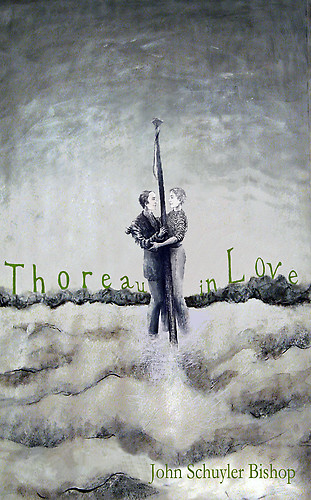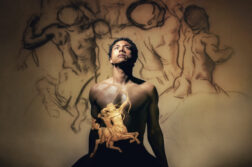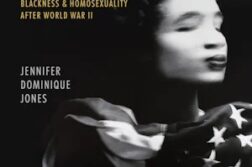 What’s Wrong with Homosexuality?
What’s Wrong with Homosexuality?
by John Corvino
Oxford Univ. Press. 192 pages, $22.95
The word “audience,” philosopher John Corvino kindly informs us on page four of this book, comes from the Latin word for “listeners.” Yet it’s unclear who is listening to this short, well-argued book, which refutes philosophical arguments against homosexuality and equal rights for GLBT people. Surely everyone knows by now that the primary arguments used against us are religious in nature, and that the best way to refute them is not to engage intellectual discourse but to demonstrate the reality of GLBT experience in a personal, emotional way. Still, it is helpful to have, in one slim volume, persuasive refutations of the nasty claims people make about us. He dutifully makes the best possible case for such propositions as that homosexuality is unnatural, or that it is dangerous, or that it resembles bestiality, then patiently refutes them. Still, does anyone really believe them in the first place? Corvino engages with a host of deservedly obscure conservative philosophers. Surely what’s really going on is pure animus and occasionally a religious enthusiasm, decorated with the rhetoric of philosophy. When it comes to these non-philosophical topics, Corvino falls short. His treatment of biblical texts, which rely on a single secondary source, will be unsatisfying to anyone not already converted. And he barely scratches the surface of the leading scholarship on how non-rational factors like disgust, shame, and fear lie beneath anti-gay prejudice. While acknowledging the value of personal appeals, he argues that we should not “dismiss the value of reasoned discourse in opening a space for a broader personal and social transformation.” Shouldn’t we? When the haters aren’t even aware that they’re hating, debating them perpetuates their own self-delusion and legitimizes their attempt to convince the rest of us that homophobia is principle instead of prejudice. Corvino strips these philosophers of their best arguments—but it might be simpler just to point out that the emperor has no clothes.
Jay Michaelson
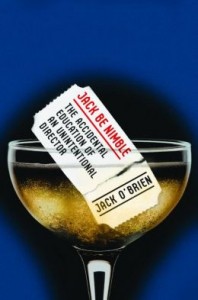 Jack Be Nimble: The Accidental Education
Jack Be Nimble: The Accidental Education
of an Unintentional Director
by Jack O’Brien
Farrar, Straus & Giroux. 352 pages, $35.
Director Jack O’Brien’s memoir is the cheerful and often very funny saga of a young man from the Midwest whose life was changed when, while he was still a theater major in Ann Arbor, an acting troupe came to town. The troupe would later become one of the great American repertory companies. The visit changed O’Brien’s life. It may tell you something about the book—which is half Auntie Mame, half Act One—that the two funniest scenes are about an audition and a toupee. It’s also got a great character at the center, the charismatic, bipolar, and bisexual Ellis Rabb, whose tragic dimensions become clear as the book goes on. But mainly it’s the coming of age of O’Brien himself, the cheerful assistant who finally gets to direct something himself and goes on to have a highly successful career in the theater (Porgy and Bess, Hairspray, The Full Monty, and, most recently, The Nance). From Michigan to the West Village, to Greece and Broadway, the story never sags, and for serious theater students there’s a bonus of an appendix: the daily diary O’Brien kept while attending rehearsals of a production of The Cherry Orchard, directed by Eve Le Gallienne.
Andrew Holleran
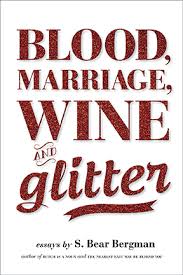 Blood, Marriage, Wine and Glitter
Blood, Marriage, Wine and Glitter
by S. Bear Bergman
Arsenal Pulp Press. 240 pages, $18.95
This latest collection of essays on family by S. Bear Bergman read like a queers-only inside joke on alternative lifestyle parenting. What do you get when you invite a gay married father, a polyamorous writer, a queer Jew, and a middle-aged transgender guy to dinner? What you get is S. Bear Bergman himself. The outer extensions of the author’s family are even more fanciful. Characters include a Fairy Godmother, a Spuncle, a Big Pup, and a Sparkle, among others. Bergman, a widely published transgender writer, invites readers to his own dinner table in this book. The title refers to the four elements that comprise Bergman’s family: blood and marriage are obvious; “wine” refers to close friends; while “glitter” captures the queerness of the family in question. “Glitter family is my long-time favorite term for this: … those of us pushed into society’s margins (and beyond) make our cohort. Glitter family is known to be shiny and unruly, easy to get, and hard to be rid of.” The collection is thus a series of family portraits—reminiscences of his early courtship with his husband, love letters to his son, ruminations over lovers won and lost, and musings over his pantry, stocked and ready should anyone drop in for a meal or a good cry. While some of the essays border on saccharine, the collection is a worthy contribution to the growing body of work on GLBT parenting.
Kate Sosin
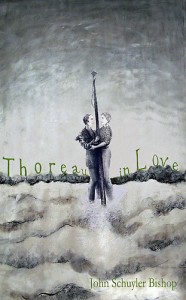 Thoreau in Love
Thoreau in Love
by John Schuyler Bishop
CreateSpace Independent Publishing
Platform. 288 pages, $14.
Situated squarely in the “speculative fiction” arena, John Schuyler Bishop’s historical novel contains one of the more intriguing scenarios of recent gay fiction. The author notes that 250 pages of Thoreau’s private journal are missing and appear to have been ripped out. Whether Thoreau himself tore these pages out is unknown. A more likely scenario is that they were removed after his death by his literary executor, Ellery Channing. Bishop’s novel is a challenge to the generations of biographers who’ve taken pains to portray Thoreau as straight, despite the evidence of a love poem he wrote to his student Edward Sewell, as well as other instances of male-centered imagery in his work. Using the opportunity presented by these missing pages, Bishop imagines up a love affair with a sailor named Ben whom Thoreau meets on his voyage to New York. The subject of the novel is those days in New York with Ben, and the rocky path of their relationship. The novel is earnest and well meaning, but the character of Thoreau never quite convincingly comes to life. Perhaps this is because Bishop seems so eager to portray the romantic aspects of the relationship that he neglects the details of Thoreau’s inner life. What’s more, the facts of Thoreau’s life are not sufficiently integrated to seem organic: they are instead merely ticked off along the path of the affair. Notwithstanding these weaknesses, Thoreau’s sexuality—and the significance of the missing pages—remains a mystery worthy of exploration.
Dale W. Boyer
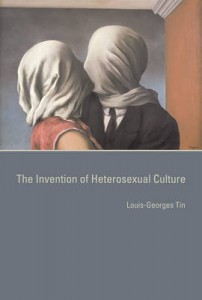 The Invention of Heterosexual Culture
The Invention of Heterosexual Culture
by Louis-Georges Tin
Palgrave/MacMillan. 208 pages, $21.95
In The Invention of Heterosexual Culture, Louis-Georges Tin explores when, how, and why the Western world began to celebrate the heterosexual couple as a cultural norm. Drawing primarily from literary material, the book is divided in three parts that explore chivalry, religion, and medicine. It is Tin’s contention that heterosexual bonding was not especially admired, much less celebrated, in the early Middle Ages. Indeed medieval clerics tended to see heterosexual relations as a menace to the Christian ideal of chastity. Unable to stop couples from having sex, the church sought to control it by instituting marriage as a Christian sacrament. Even medieval medicine, such as it was, got into the act, defining heterosexual love as a condition whose manifestations were erotic melancholy and feminine hysteria. On balance, Tin’s book skilfully succeeds in producing a wide-ranging social history of heterosexuality. While the book is well-written and jargon-free, one could object that the core concept, “heterosexual love,” is not clearly or consistently defined. Clearly there was a surge in heterosexual culture by the time of the troubadours in the High Middle Ages, but Tin does not account for this development.
Francisco Costa
Same Love
by Macklemore, Ryan Lewis and Miranda Lambert
Independent publisher
Every so often a pop song comes along that makes such a strong impression on its listeners that they remember exactly where they were when they first heard it. “Same Love,” a down-tempo ditty from rapper Macklemore, producer Ryan Lewis, and singer Miranda Lambert, is just that. If Lambert’s vibrato doesn’t captivate you, the gay-positive rhymes of the Seattle-based Macklemore will. He takes on the homophobia of hip-hop culture and on-line message boards, saying the epithet “faggot” is “rooted in hate” and that “gay” is “synonymous with the lesser [in a]culture founded on oppression.” The song has already achieved anthem status, appearing in the new HBO documentary, Valentine Road, which centers on the 2008 murder of an openly gay eighth-grader in California. In the song, Macklemore confesses that while growing up he thought he might be gay because he liked to keep his room tidy and had a gay uncle. Then comes the trombone and Lambert’s impassioned refrain: “She keeps me warm/ My love, my love, my love.” “Same Love” has something for everyone, and perhaps the ribbon on top is the single’s cover artwork, which features a portrait of Macklemore’s aforementioned uncle John and his long-term partner Sean. The power of this protest song is that it transcends genres and generations.
Colin Carman
Ryan Amador
Music by Ryan Amador
Independent label
The fact that Ryan Amador had his heart broken doesn’t make him special. What makes this 23-year-old singer-songwriter special, even exceptional, are the musical risks he takes in expressing that heartache. “He’s not good enough for you,” Amador sings repeatedly on “Instead.” “He won’t do the things I would do/ Choose me instead.” His self-titled LP is full of surprises; it ranges from “It’s Possible/I Love You” to “Ballad of the Young,” a rousing folk-song that ends with a kid choir and a kazoo. The debut single is “Define Me,” which the out artist’s website describes as an “LGBT anthem proposing a removal of labels that divide us.” The song’s video, in which he and Jo Lampert strip down to their skivvies, garnered more than 133,000 hits on YouTube in its first five months. “We’re starting this party tonight where people will be undefined and love whom they want.” A less sensationalized video accompanies “Instead,” a lovelorn confessional of a man who’s been passed over. Amador’s backup singers croon from a couch near his piano; his inclusion of other vocalists is smart, because they help to break up the sometimes gooey balladry. Amador, who recently opened for Adam Lambert at Pittsburgh Pride, told me that his earliest influence was listening to Queen in a babysitter’s car, and that he wants to continue to “speak from the heart [in the]hope that people would feel that in their hearts.”
Colin Carman


